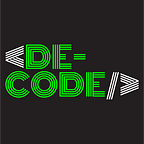Virtual Reality: Where We Are & Where We Are Heading
I am sure you must have heard a whole lot about Virtual Reality (VR) and how cool it is. Let’s talk about what it really is and what it holds for us in the future. Google along with a lot of other big companies have invested a huge deal in the development of VR technology with the likes of Google Daydream, HTC Vive, Oculus Rift, and Samsung Gear VR.
What does VR really mean?
Virtual reality allows the user to be immersed in a virtual world, unlike any other regular screens in front of the user which does not provide for such an experience. VR can include 4 of the 5 senses, including vision, hearing, touch and possibly even smell. With this power, VR can take people for a trip to the virtual world easily.
The long-standing hurdle with the widespread of VR is its cost. Enjoying high-quality VR experience comes with a price. Google has been trying its best to combat this with the launch of products like Google Cardboard and Daydream ecosystems.
What VR does is, it tricks your brain into believing that you are in a 3D world. The way VR achieves this is with the help of stereoscopic display. An example of what a stereoscopic display looks like is as above.
There are more factors that affect our VR experience including Field of View (FOV) and latency. They play an important role in how we perceive VR and if they are not done correctly, then it can cause motion sickness.
As of today, lower cost hardware based on existing platforms is changing the game, as mobile platforms are offering console-like performance. Not just that, but existing mobile devices already come equipped with many of the sensors VR requires, from gyros to accelerometers, opening up a whole world of mobile VR possibilities.
What’s next for VR?
According to a report by Digi-Capital, the Virtual Reality industry has a forecast worth of US$30 billion by 2020. With the money distributed over multiple VR markets including VR games, VR hardware, VR film, VR theme park, and VR niche markets.
A start-up company called Magic Leap is working on a head-mounted virtual retinal display, called Magic Leap One, which superimposes 3D computer-generated imagery over real-world objects, by “projecting a digital light field into the user’s eye”, involving technologies potentially suited to applications in augmented reality and computer vision. They recently came out with a creator edition of their first ever commercial product and it is called Magic Leap One. Magic Leap has been able to achieve all this with huge amounts of funding from the likes of Google, Alibaba, and other giants from the tech industry. Microsoft has also launched something similar in 2016 and they call it the HoloLens. The likes of Magic Leap One and Microsoft’s HoloLens is how the future of Virtual/Mixed Reality is going to look like.
VR allows us access to high-end, immersive gaming experience, mobile VR allows us to be involved in a chosen game at home, work, or anywhere we chose to be. That’s not all, VR can help with research work as well, by letting us see exhibitions in world-class museums and galleries without an expensive trip to London, Paris, or anywhere else. Going around shopping during the festive season can also be a headache, but what if you could wander the aisles and compare options for your next car, sofa, TV or even a pair of shoes or jeans, without being upsold by pushy salesmen? All of this can be possible with the help of VR and in not so very distant future, it will become a standard way of working for us.
